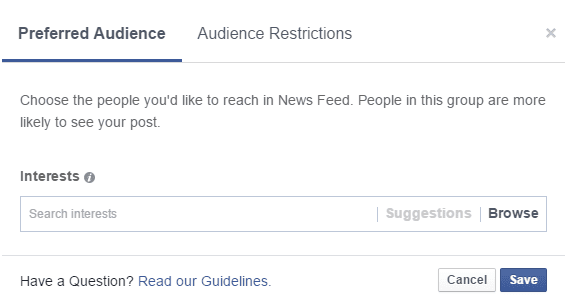Last week, Facebook released a new feature that aims to help marketers increase engagement on their organic posts. Facebook Audience Optimization is a tool that allows publishers to add targeting information to reach an audience most interested in their posts. Here’s a quick guide on how to get started on Audience Optimization – and how to get the most out of it.
Who can use Audience Optimization?
Audience Optimization is now available to all English-language Pages, and Pages that have more than 5,000 likes automatically turn the feature on. Other Pages can manually activate the tool through Settings.
Why is Audience Optimization valuable for marketers?
Organic engagement has been increasingly challenging on Facebook, and most marketers have accepted that it’s simply a pay-to-play social network. Facebook ads are still a worthwhile investment, and they won’t be going away any time soon, but Audience Optimization will give you more control over who sees your organic posts. It lets you target users by interests, instead of hoping posts get in front of the right eyeballs (or paying to boost them all).
There are three parts of Audience Optimization:
Preferred Audience
Add tags to describe the interests of people you think will enjoy your posts. Facebook will use these tags to prioritize posts in users’ News Feeds based on topics they’re likely to find interesting. Tags do not limit reach.
Audience Restrictions
Limit who sees posts, based on gender, age, location and languages. If you think a certain post won’t be of interest to a particular group of people, you can filter them out this way.
Audience Insights
Measure and analyze how each interest tag contributes to a post’s engagement (through reach, clicks, shares and likes).
What are best practices for Audience Optimization?
Facebook put together a detailed list of recommendations for using Audience Optimization; here are a few to help you get started:
- Think about your audience and what they find interesting using the tool; use a mix of specific and general interest terms (avoiding those that are very broad)
- Use six to 10 tags, and don’t get too caught up in trying to capture every keyword possible
- When in doubt, use “who, what, where, when, why and how” to pick your tags
- Think beyond just the topics covered in your post, and open up tags to related interests
- Add location tags for posts with local or regional significance
Browse MtoM’s social media case studies

